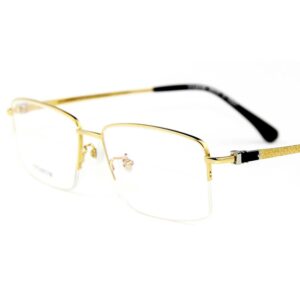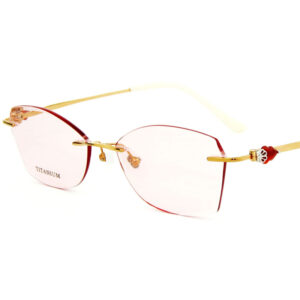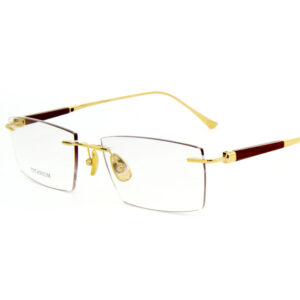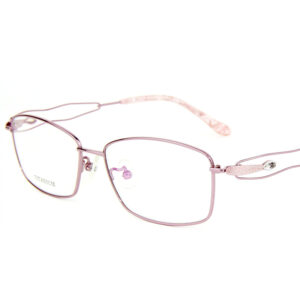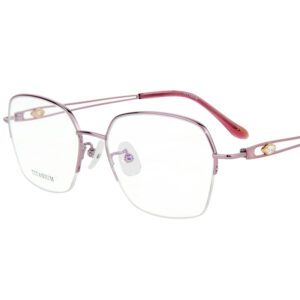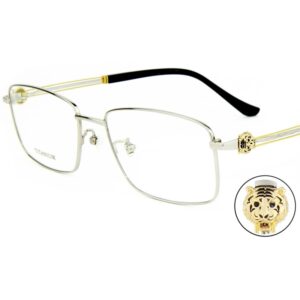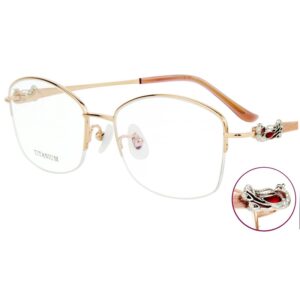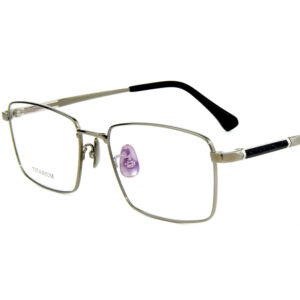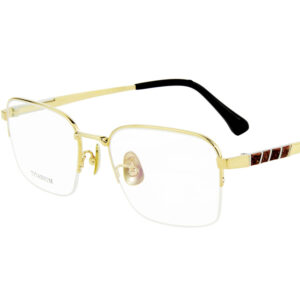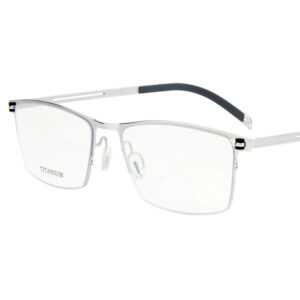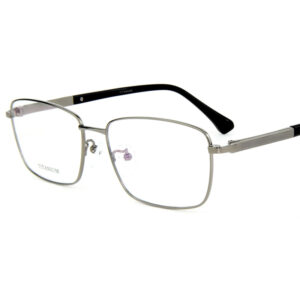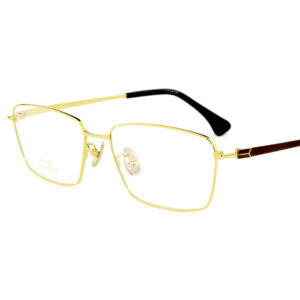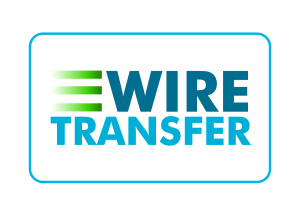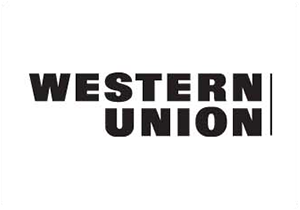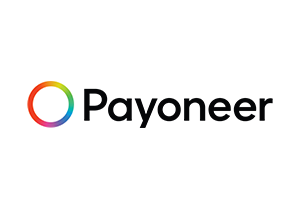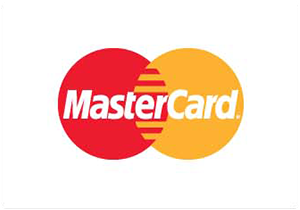Are you a Brazilian business owner looking to source high-quality sunglasses at competitive prices? You’re not alone. Many Brazilian entrepreneurs recognize the value of importing eyewear from China but are often overwhelmed by the process. From navigating customs regulations to ensuring quality control, the journey can seem daunting. The good news? With the right guidance, importing sunglasses can be a straightforward and profitable endeavor.
To successfully import sunglasses from China to Brazil, follow these essential steps:
- Identify Reliable Suppliers: Research and vet Chinese manufacturers through trade shows, online platforms like Alibaba, or supplier directories.
- Understand Brazilian Import Regulations: Comply with ANVISA and INMETRO certifications for eyewear products.
- Negotiate with Suppliers: Ensure clarity on product specifications, pricing, MOQ (minimum order quantity), and shipping terms.
- Arrange Shipping: Choose between air and sea freight, balancing cost and delivery timelines.
- Clear Customs in Brazil: Prepare all required documentation, including invoices, packing lists, and certificates of origin, to streamline customs clearance.
- Plan Your Distribution: Once your sunglasses arrive, organize logistics for storage and distribution to your retail or wholesale network.
By systematically addressing each of these steps, you can minimize risks and ensure a seamless import process. While the steps above provide a roadmap, each stage involves its own challenges. From evaluating supplier reliability to understanding ever-changing Brazilian import laws, the devil is in the details. Ready to dig deeper? Let’s break down the key questions and concerns you might face and how to tackle them like a pro.
Table of Content
Chapter One: How to Find the Best Sunglass Suppliers From China?
- Step 1: Find the Best Source for Importing Eyewear from China
- Step 2: Communicating with Manufacturers
- Step 3: Visit Eyewear Manufacturers (If possible)
- Step 4: Considerations Before Importing Eyewear
- Step 5: Negotiating Prices with Eyewear Manufacturers
- Step 6: Placing Your Order with the Eyewear Manufacturer
- Step 7: Making the Deposit
- Step 8: Inspecting the Products
- Step 9: Final Payment
Chapter Two: How to Shipping Sunglass Products From China To Brazil?
Commen Knowledge: Shipping from China to Brazil | Sea, Air & Rail Freight Rates
- December 2024 Shipping Update: From China to Brazil
- Freight Shipping Cost from China to Brazil for December 2024
- Understanding Import Tax and Duties
- Shipping from China to Brazil Transit Time
- Door to Door Shipping from China to Brazil
- Sea Freight from China to Brazil (December 2024)
- Air Freight from China to Brazil (December 2024)
- Express Shipping from China to Brazil
- Key Ports in China and Brazil for Shipping
- Freight Forwarders from China to Brazil
Chapter Three: How to Ship Sunglasses from China to Brazil: A Step-by-Step Guide
- Choosing the Right Shipping Method
- Finding Reliable Suppliers and Freight Forwarders
- Preparing Necessary Documents
- Arranging Product Packaging and Labeling
- Understanding and Complying with Brazil Customs and Import Regulations
- Tracking and Managing Shipment Status
- Post-Arrival Inspection and Final Delivery
- Reviewing and Optimizing the Shipping Process
Conclusion
Chapter One: How to Find the Best Sunglass Suppliers From China?
China has rapidly become a manufacturing powerhouse, producing a significant portion of the world’s consumer goods. For many companies, importing from China has proven to be a profitable global sourcing strategy. This is especially true for eyewear buyers and distributors looking to capitalize on high-quality products at competitive prices. If you’re considering importing eyewear from China, you’ve made a smart choice.
Out of the 195 countries globally, 81 countries import various products from China—this is a significant market. So, whether you are an eyewear retailer, distributor, or brand owner, importing eyewear from China can be a lucrative opportunity.
Eyewear products from China, such as sunglasses, prescription glasses, and sports goggles, are known for their cost-effectiveness, quality, and wide variety of styles. They protect eyes from various elements like:
- Excessive sunlight
- UV radiation
- Dust and debris
- Impact during sports
- Environmental hazards
- And more.
As you can see, the effort you put into importing eyewear from China is well worth it. However, this process is not without its challenges, particularly for newcomers. Importing can be time-consuming, complex, and costly if not handled correctly.
Longer shipping times, regulatory fees, rising or fluctuating distribution costs, and unforeseen delays can all erode expected profits.
Nevertheless, by following the right guide, you can successfully import eyewear from China and benefit from it. That’s where we come in. We support you every step of the way. Below is our step-by-step guide on how to import eyewear from China.
Let’s get started.
Step 1: Find the Best Source for Importing Eyewear from China
1. Using Google to Find Manufacturers
The first place most people turn to for finding answers is Google. Similarly, Google will provide a list of the most relevant results for your search.
Google has recently updated its page-ranking algorithms, which helps users distinguish between reliable websites and malicious ones.
You must narrow down the list of manufacturers to those that best suit your needs from the results you find. Afterward, you’ll contact them to determine which manufacturer you want to work with.
A major drawback of using Google to find manufacturers is that you might not find a single manufacturer that produces all the different types of eyewear you need. This could force you to source products from multiple manufacturers, which can be both expensive and time-consuming.
2. Using Alibaba to Find Manufacturers
Alibaba is one of the largest e-commerce platforms in China and globally. Thanks to its popularity and massive user base, you can quickly find various eyewear manufacturers offering a wide range of products.
However, as an open marketplace, Alibaba can also be a breeding ground for scammers. Additionally, Alibaba’s ranking system can be manipulated by companies that pay for higher rankings but may not offer quality products.
Therefore, be extra cautious when using Alibaba to find manufacturers.
3. Attending Trade Shows to Find Manufacturers
International trade shows and exhibitions are excellent opportunities for buyers and manufacturers to establish connections and secure reliable partnerships. Attending these events allows you to see and purchase samples of the products you’re interested in.
This helps you avoid the disappointment of importing products you’ve never seen before. Exhibitions also offer the potential to build a strong business network, as you can engage in face-to-face interactions with sellers and buyers.
| Exhibition Name | Location | Time | Focus Areas | Exhibition Highlights | Ideal For |
|---|---|---|---|---|---|
| China International Optics Fair (CIOF) | Beijing, China | Every September | Optical frames, sunglasses, lenses, eyewear accessories, manufacturing equipment. | – Largest and most authoritative eyewear exhibition in China. – Features major global brands like Essilor and Hoya. – Covers a wide range of products, including fashion and technical innovations. – Opportunities to meet suppliers and industry leaders. | Buyers and brand owners seeking trusted Chinese manufacturers, suppliers, and global trends. |
| China (Shanghai) International Optics Fair (SIOF) | Shanghai, China | February or March | Luxury eyewear brands, optical lenses, lens technology, innovative eyewear designs. | – One of the most important eyewear exhibitions in Asia. – Strong international presence from Italy, Germany, Japan, and other countries. – Features an “Innovation Zone” for the latest designs and technologies. – Networking opportunities with global players. | Buyers looking for international collaborations, cutting-edge products, and high-tech solutions. |
| Shenzhen International Optics Fair (SZIOF) | Shenzhen, China | May or November | High-end eyewear, innovative technologies, smart glasses, eco-friendly materials, and premium ODM/OEM services. | – Focuses on high-end fashion and technological eyewear innovations. – Highlights eco-friendly and sustainable eyewear manufacturing. – Comprehensive ODM and OEM resources for brands looking for customized solutions. – Targets the booming Pearl River Delta region market. | Buyers and brands seeking high-quality customization services and innovative technology partners. |
| Hong Kong Optical Fair | Hong Kong Convention and Exhibition Centre | Every November | International eyewear brands, cutting-edge designs, optical technology, and accessories. | – Highly globalized exhibition with exhibitors from over 20 countries. – Features an “Optical Design Competition” to promote creativity and innovation. – Insightful industry forums covering global trends and market developments. – Strategic gateway to the Asian market. | Buyers aiming to expand their global network and stay updated on international market trends. |
| Wenzhou International Optics Fair (WOF) | Wenzhou, China | Every October | Affordable eyewear manufacturing, mid-range to high-end products, bulk production. | – Focus on cost-effective eyewear solutions. – Highlights the production capabilities of small to medium-sized manufacturers. – Suitable for importers looking for competitive pricing and high-volume suppliers. – Strong emphasis on quality control and export-readiness. | Importers and distributors seeking affordable, scalable procurement solutions. |
How to Choose the Right Trade Show
- Product Needs:
- If you’re seeking high-end or customized eyewear, Shenzhen (SZIOF) and Hong Kong Optical Fair are the best choices.
- For cost-effective bulk purchases, Wenzhou (WOF) provides excellent options.
- For a mix of both worlds, CIOF (Beijing) and SIOF (Shanghai) offer a balance between affordability and international exposure.
- Global Reach:
- Hong Kong Optical Fair and SIOF are internationally oriented, perfect for buyers looking to connect with global suppliers and explore the latest trends in design and technology.
- Proximity to Manufacturing Hubs:
- Wenzhou (WOF) is ideal for visiting factories specializing in affordable eyewear production.
- Shenzhen (SZIOF) provides access to innovative technology and high-end ODM/OEM services.
Key Takeaways
Attending these trade shows offers:
- Supplier Networking: Directly meet manufacturers, negotiate deals, and evaluate production capabilities.
- Product Trends: Stay informed about innovations in eyewear, from smart glasses to eco-friendly materials.
- Business Expansion: Build relationships with reliable partners and explore new markets.
Unfortunately, trade shows are not held frequently, but if you are willing to travel to other countries to attend these events, it can be worth it. You’ll gain valuable knowledge to take informed steps in the future.
If attending in person is not possible, make sure to leverage these opportunities when they appear in your local area.
Step 2: Communicating with Manufacturers
Avoid These Mistakes When Contacting Manufacturers
Manufacturers receive numerous messages and emails daily from potential clients. To avoid being overlooked, keep your emails short and to the point. Lengthy emails may not get the attention you desire. Instead, follow up with detailed information after receiving a response.
Requesting too little may lead manufacturers not to take you seriously. If unsure, consider calling the company to clarify your needs.
Step 3: Visit Eyewear Manufacturers
If you want to secure high-quality eyewear, there’s no substitute for an on-site visit. Visiting the manufacturer allows you to meet the team, understand the production process, and inspect the facilities.
1. Visit the Product Showroom
When you visit a manufacturer, you’ll have the opportunity to tour their showroom, where they showcase their various eyewear products in an attractive manner. This visit will allow you to assess the quality, design, and variety of products available.
2. Visit the Production Line
By touring the production line, you can observe the entire manufacturing process, from raw material handling to the final assembly. This insight is invaluable for evaluating the manufacturer’s capabilities and quality control measures.
3. Benefits of On-Site Visits
Visiting the manufacturing site can significantly benefit your business relationship. It shows the manufacturer that you are serious about purchasing their products, which can lead to better pricing and service.
Building a strong relationship with the manufacturer can result in better communication, negotiation, and long-term cooperation. You’ll also gain knowledge about the materials and techniques used, expanding your expertise in the eyewear industry.
Step 4: Considerations Before Importing Eyewear
Before purchasing and importing eyewear, there are several crucial factors you need to consider to ensure the products meet your requirements and comply with your market’s standards:
1. Materials: High-quality eyewear products typically use materials like acetate, TR90, and titanium. Acetate is popular for its durability and flexibility, while TR90 is known for its lightweight and impact resistance. Titanium is valued for its strength, corrosion resistance, and hypoallergenic properties. Ensure that the eyewear materials meet the quality and safety standards of your target market.
2. Size: Eyewear size can vary depending on the style and target demographic. A good supplier should offer customizable sizing options to cater to different face shapes and sizes. This includes variations in frame width, bridge width, and temple length. Custom sizing ensures that the eyewear fits comfortably for the end-user.
3. Structure/Construction: The construction of eyewear is critical to its durability and comfort. High-quality eyewear is often constructed using multi-layer lamination for acetate frames or injection molding for plastic frames. The hinges and screws should also be of high quality, ensuring longevity and ease of use.
4. Color: Eyewear is available in various colors and finishes, such as matte, glossy, or metallic. Popular choices include classic colors like black, tortoiseshell, and clear frames. Custom color options can also be offered to align with current fashion trends or specific branding requirements.
5. Weight: The weight of eyewear can significantly affect comfort, especially for prolonged wear. Lightweight materials like TR90 and titanium are often preferred for their comfort, making them ideal for prescription glasses and sports eyewear.
6. Accessories:
- Lens Cleaning Cloths: Essential for maintaining lens clarity without scratching.
- Protective Cases: Helps to protect eyewear from damage during storage or transport.
- Nose Pads: Silicone or rubber nose pads can be customized for comfort and durability.
- Hinges and Screws: High-quality components are necessary for durability and ease of maintenance.
- Coatings: Anti-reflective, anti-scratch, and UV protective coatings are common and can enhance the functionality and lifespan of the eyewear.
When importing eyewear, these factors will help ensure that the products meet both your quality expectations and the needs of your customers. Make sure to communicate these requirements clearly with your manufacturer to avoid any discrepancies during production.
Step 5: Negotiating Prices with Eyewear Manufacturers
Negotiating prices is a crucial step in the process of importing eyewear. The goal is to create a win-win situation for both you and the manufacturer.
Here are some strategies to ensure successful negotiations:
- Be Prepared with Detailed Negotiation Data: Before entering negotiations, gather all the relevant data, including market prices, production costs, and your desired profit margins. When manufacturers see that you are well-prepared and serious about purchasing, they will be more inclined to offer competitive prices to secure your business.
2.Request Pricing Based on Quantity Tiers: As with most products, purchasing eyewear in bulk often reduces the price per unit. Ask the manufacturer for a breakdown of prices based on different order quantities. This allows you to evaluate how much you can save with larger orders and decide on the best purchase quantity for your budget and inventory needs.
3.Quality vs. Price: Keep in mind that higher quality often comes at a higher price. While it’s tempting to push for the lowest possible cost, ensure that the quality of the eyewear meets your standards. The goal is to find the best balance between cost and quality.
4.Understand the Manufacturer’s Costs: Gaining insight into the manufacturer’s costs, including labor, materials, and overhead, can help you assess whether their pricing is reasonable. This knowledge also provides leverage during negotiations, as you can discuss any price discrepancies with a better understanding of their cost structure.
5.Build a Good Relationship: Establishing yourself as a reliable customer will make negotiations smoother. If you’re seen as a long-term partner rather than a one-time buyer, manufacturers may be more willing to offer better terms and prices.
6.Avoid Endless Requests for Samples: Constantly requesting samples without committing to an order can strain your relationship with the manufacturer. Be transparent in your communications and avoid creating the impression that you’re just shopping around without serious intent.
7.Don’t Overdo Haggling: While negotiating for the best price is important, excessively haggling over every cent can be counterproductive. Both you and the manufacturer are in business to maximize profits, so aim for a fair agreement that benefits both parties.
8.Consider Hiring a Representative: If visiting the manufacturer in person isn’t feasible, consider hiring a representative in China to assist with negotiations. This person can provide local insights, handle communications, and ensure that your interests are well-represented.
If hiring a representative is not an option, phone calls and email exchanges can also be effective, as long as they are clear and professional.
Step 6: Placing Your Order with the Eyewear Manufacturer
Once negotiations are successful, it’s time to place your order.
Sample Orders vs. Bulk Orders
Sample Orders: A sample order is a small initial order of one or more products that allows you to evaluate the quality and suitability before committing to a larger purchase. This step is especially useful if you haven’t yet visited the manufacturer in person. Sample orders carry lower risk and can save you from significant losses if the product doesn’t meet your expectations.
When discussing sample orders with the manufacturer, your email should include:
A clear statement that you are requesting a sample order.
The specific products you wish to test.
Any customizations you want for the samples. Be detailed and precise.
The quantity of each item you wish to order.
Your shipping address for sample delivery.
Bulk Orders: If you have visited the manufacturer and are confident in their products, placing a bulk order may be the best choice. Bulk orders are cost-effective and demonstrate your commitment to a long-term partnership, potentially leading to better terms and future negotiations.
With these steps, you can effectively negotiate prices and place orders, ensuring that you get the best value for your eyewear imports.
Step 7: Making the Deposit
After placing your order with the eyewear manufacturer, the next step is payment. In most cases, you will need to pay a deposit, typically around 30% of the total order amount, before the manufacturer begins production.
The manufacturer will provide you with their bank details for the transfer. If you’ve conducted an on-site visit, this is an excellent opportunity to negotiate and establish a clear payment schedule that suits both parties.
Once the initial deposit is paid, the manufacturing process for your eyewear products will commence.
Step 8: Inspecting the Products
Inspecting the products is a crucial step to ensure that the eyewear meets your standards and specifications. You should dedicate significant attention to this phase to avoid any potential issues with quality.
Inspect the eyewear for any defects such as lens scratches, misaligned frames, or loose hinges. If you can’t be physically present for the inspection, request that the manufacturer send detailed photos and videos of the products. This visual confirmation can help you verify that everything is in order before proceeding further.
A reputable manufacturer will have a compensation strategy in place for handling any defects or issues that arise after delivery.
Step 9: Final Payment
Once the inspection is complete and you are satisfied with the quality, it’s time to make the final payment. This usually covers the remaining 70% of the total order amount.
In some cases, after successful negotiations, you might agree to pay 50% before delivery and the remaining 20% after the products have been delivered. Once the final payment is made, the delivery process will begin, and your eyewear products will be on their way to you.
Chapter Two: How to Shipping Sunglass from China to US?
Considering shipping from China to Brazil? Understanding the economic and logistical frameworks can significantly enhance your business operations. The trade relationship between these two powerhouse economies offers substantial growth, development, and prosperity, impacting employment and GDP positively. Additionally, platforms are revolutionizing how businesses worldwide engage in international trade, making global market access more streamlined and efficient than ever before. This guide explores the critical roles and benefits of these dynamics in detail.
December 2024 Shipping Update: From China to Brazil



Costs: Shipping costs between China and Brazil in December 2024 show varying rates. For sea freight, the cost for a 40-foot container to Santos is $5,400, to Rio de Janeiro is $5,600, and to Paranaguá is $5,400. Air freight costs from China to Guarulhos (GRU) are approximately $8.6 per kg for shipments over 1000 kg.
Delivery Times: Delivery times vary based on the mode of transportation. Sea freight from China to Brazil takes approximately 29-35 days, depending on the specific port, while air freight takes 4-6 days.
Customs: Proper documentation is crucial to avoid delays at customs in Brazil. Ensure that all paperwork is accurate and complete, especially during the peak season.
Global Events Impacting Brazil: Geopolitical issues or disruptions in major ports, such as those in China, could impact shipping routes, leading to delays and increased costs for shipments to Brazil.
Outlook for December 2024: As the year-end approaches, shipping rates may stabilize due to reduced peak season pressure. However, minor delays might still occur because of holiday-related logistics congestion. Strategic planning and early booking remain advisable to mitigate potential challenges.
Summary for Brazilian Shippers: To ensure efficient logistics operations from China to Brazil, stay informed about current shipping rates and possible delays. Effective planning, accurate documentation, and flexibility in logistics strategies are essential for navigating end-of-year shipping complexities.
Freight Shipping Cost from China to Brazil for December 2024
Overview of Costs by Shipping Mode
When shipping from China to Brazil, it’s important to understand the costs associated with each shipping mode to choose the most cost-effective option for your goods. Here’s a breakdown of typical prices across different transport methods for December 2024:
| Shipping Mode | Description | Cost (December 2024) |
|---|---|---|
| LCL (Less than Container Load) | Ideal for smaller shipments not requiring a full container. | Approximately $50 to $100 per cubic meter |
| FCL 40-foot Container to Santos | Full Container Load for large shipments. | $5,400 |
| FCL 40-foot Container to Rio de Janeiro | Full Container Load for large shipments. | $5,600 |
| FCL 40-foot Container to Paranagua | Full Container Load for large shipments. | $5,400 |
| Air Freight to Guarulhos (GRU) | Faster option, suitable for valuable goods. | $8.6 per kilogram |
These costs can fluctuate based on factors like fuel prices, seasonal demand, and carrier charges.
Estimating Shipping Costs and Effective Budgeting
To effectively estimate shipping costs from China to Brazil, businesses must consider all relevant expenses including fuel surcharges, customs duties, and other possible fees:
- Fuel Surcharges: Can vary but often add 10-22% to the overall shipping costs.
- Customs Duties: Dependent on the type of goods and their value; however, it’s not uncommon for duties to range from 5% to 35% of the shipment’s declared value.
- Other Fees: These might include documentation fees, container fees, and port handling charges.
Businesses should work with experienced freight forwarders like SINO Shipping to get precise estimates. Tools like freight rate indexes can also provide current market rates, helping shippers budget more accurately and anticipate fluctuations in shipping costs. This foresight is critical for maintaining cost efficiency and ensuring timely deliveries without unexpected expenses.
Understanding Import Tax and Duties
Impact of Import Taxes on Overall Shipping Costs
Import taxes and duties are critical components that can significantly increase the total cost of shipping goods from China to Brazil. Brazil’s import duty rates vary widely, typically ranging from 0% to 35%, depending on the commodity type. Additionally, a Value-Added Tax (VAT) is applicable on imports, which varies between 17% and 25% depending on the Brazilian state.
The calculation of these taxes is based on the Customs Transaction Value (CTV), which encompasses the cost of the goods plus insurance and freight (CIF). Accurate knowledge and application of this information are essential to avoid unexpected costs. Tools like online duty calculators can help provide estimates based on current regulations and tariff codes.
| Product Category | Import Duty (%) | VAT (%) |
|---|---|---|
| Electronics | 16 | 18 |
| Textiles | 35 | 18 |
| Machinery | 14 | 18 |
| Automotive parts | 18 | 18 |
| Toys | 35 | 18 |
| Pharmaceuticals | 0 | 18 |
| Consumer Goods | 20 | 18 |
Navigating Legal Compliance in International Shipping
For successful international shipping from China to Brazil, legal compliance is paramount. This compliance starts with the accurate classification of goods using the Harmonized System (HS) codes, which influence the applicable duties and regulations.
Correct value declaration is also crucial for compliance. Misdeclarations can lead to significant penalties, including fines or seizure of goods. It’s vital to ensure all related documentation, such as commercial invoices and packing lists, is accurate and comprehensive.
Businesses can streamline the customs clearance process by working with experienced freight forwarders who understand local regulations. Programs like Brazil’s Authorized Economic Operator (AEO) can also facilitate smoother and quicker customs procedures for verified entities, reducing the risk of delays and enhancing overall efficiency in logistics.
Shipping from China to Brazil Transit Time
Comparison of Transit Times Across Shipping Modes
When shipping goods from China to Brazil, understanding the differences in transit times across various shipping modes is crucial for planning and efficiency. Here’s a look at the typical durations:
| Shipping Mode | Transit Time |
|---|---|
| Sea Freight (LCL) | 29 to 35 days depending on vessel schedules and sea conditions |
| Sea Freight (FCL) | 29 to 35 days depending on vessel schedules and sea conditions |
| Air Freight | 4 to 6 days |
| Express Shipping | 7 to 10 days |
For businesses, choosing the right mode involves balancing cost and speed, especially when dealing with perishable goods or high-demand inventory scenarios.
Factors Affecting Transit Times and Mitigation Strategies
Several factors can affect the transit times for shipments from China to Brazil. Key issues include:
- Weather Conditions: Severe weather can delay sea and air freight.
- Port Congestion: Busy ports can slow down cargo processing times.
- Customs Delays: Inefficient or complicated customs procedures can extend the delivery times.
To mitigate these delays, shippers should:
- Choose the Right Shipping Mode: Based on the urgency of the goods. Quick delivery might justify the higher cost of air freight over sea freight.
- Work with Reliable Freight Forwarders: Experienced forwarders can navigate logistics challenges and streamline the shipping process.
- Understand Customs Requirements: Being well-prepared with all required documentation can help avoid delays at customs.
Implementing these strategies can help ensure more predictable and timely deliveries, optimizing overall supply chain efficiency.
Door to Door Shipping from China to Brazil
Advantages of Door-to-Door Services
Utilizing door-to-door shipping services to transport goods from China to Brazil presents numerous benefits that can streamline the logistics process significantly. These services handle every logistic aspect, from pickup at the supplier’s location in China to delivery at the recipient’s doorstep in Brazil. This comprehensive approach minimizes the complexity for shippers by managing all transportation, customs clearance, and local delivery.
Key advantages include:
- Simplified logistics: Shippers don’t need to coordinate multiple stages of transit; the door-to-door provider manages the entire chain.
- Reduced handling of goods: Fewer transfers between different modes of transport mean a lower risk of damage.
- Potential cost savings: Consolidating services under one provider can lead to lower overall shipping costs due to optimized logistics solutions.
These features make door-to-door services particularly attractive for businesses looking for a hassle-free shipping solution.
Choosing the Right Door-to-Door Service
Selecting the right door-to-door service is critical for ensuring efficient and reliable shipping from China to Brazil. Platforms like SINO Shipping play a pivotal role in facilitating this process, offering access to a wide range of service providers.
When choosing a provider, consider the following factors:
- Reliability: Look for service providers with a track record of timely and safe deliveries.
- Cost: Compare different providers to find the most cost-effective option without compromising service quality.
- Service coverage: Ensure the provider can handle shipments to your specific destinations in Brazil.
- Expertise in customs and regulations: Choose a provider well-versed in handling the complexities of international shipping laws and Brazilian customs regulations.
Sea Freight from China to Brazil (December 2024)
| Shipping Type | Description | Cost Range | Transit Time |
|---|---|---|---|
| LCL Shipping | Suitable for smaller shipments. Pay only for the space used. | $40 to $60 per cubic meter | 35 to 50 days |
| FCL 40-foot Container | Best for very large shipments that can fill a 40-foot container. | $5,400 to $5,600 | 29 to 35 days |
Benefits of LCL and FCL Shipping
When shipping from China to Brazil via sea freight, businesses can choose between Less than Container Load (LCL) and Full Container Load (FCL) depending on their cargo volume and budget constraints.
- LCL Shipping: Suitable for cargo volumes that don’t fill an entire container. LCL allows shippers to pay only for the container space they use, which typically costs between $40 to $60 per cubic meter. The flexibility of LCL makes it an economical option for smaller shipments, but it may involve longer transit times due to the need to consolidate cargo from multiple shippers. Expected transit times for LCL range from 35 to 50 days.
- FCL Shipping: Best for larger shipments that can fill at least one entire container. This option secures a private container for the shipper’s goods, enhancing safety and reducing handling risks during transit. Prices for a 40-foot container range from $5,400 to $5,600 in December 2024. FCL also tends to be faster, with transit times of about 29 to 35 days.
Both shipping methods offer advantages in terms of cost, security, and flexibility, making sea freight a versatile option for many types of shipments.
Selecting a Sea Freight Forwarder and Top Shipping Routes
Selecting an appropriate sea freight forwarder is crucial for navigating the complexities of international shipping from China to Brazil. Factors to consider include:
- Cost: Competitive pricing for the required services.
- Reputation and Reliability: Choose forwarders known for dependability and excellent service.
- Expertise in Customs and Documentation: Necessary to handle international shipping requirements efficiently.
- Network of Routes: Ensure the forwarder has access to multiple shipping routes and strong logistical support in both China and Brazil.
The most popular shipping routes from China typically involve departures from major ports like Shanghai, Ningbo, and Guangzhou, arriving at Brazilian ports such as Santos, Paranaguá, and Rio Grande. Understanding these routes is vital as they can significantly affect both transit times and overall costs due to factors such as distance traveled, port efficiency, and seasonal traffic variations.
Air Freight from China to Brazil (December 2024)
| Aspect | Detail |
|---|---|
| Transit Time | Typically 4 to 6 days to deliver from China to Brazil. |
| Cost per Kilogram | Generally around $8.6 per kilogram for shipments over 1000 kg in December 2024. |
Advantages and Considerations of Air Freight
Air freight from China to Brazil provides compelling advantages, particularly for businesses needing fast and reliable transportation. This mode of shipping can drastically reduce transit times, typically ensuring delivery within 4 to 6 days. It’s especially effective for high-value, perishable, or urgent shipments, where the speed of delivery outweighs cost considerations.
However, these benefits come with a higher price tag. The cost of air freight is substantially higher than sea freight, with prices generally ranging from $8 to $8.6 per kilogram for December 2024. This cost can escalate depending on the size and weight of the shipment, fuel prices, and the urgency of the delivery. Businesses must consider whether the reduced shipping time justifies the increased expense, particularly when handling bulk or non-urgent goods.
Choosing the Right Air Freight Forwarder
Selecting a competent air freight forwarder is vital to navigate the complexities of international shipping from China to Brazil effectively. The right forwarder not only ensures compliance with all regulatory requirements but also minimizes the risk of delays and additional costs.
Key criteria for choosing a forwarder include:
- Network Reach: A forwarder with extensive global networks can provide more flexible and efficient routing options.
- Customs Expertise: Essential for smooth clearance at borders, reducing the risk of hold-ups.
- Pricing and Transit Times: Forwarders should offer competitive rates and swift delivery schedules. For example, premium services might offer faster delivery at a higher cost, which might be necessary for particularly urgent shipments.
Businesses should gather detailed quotes and service level agreements from several forwarders, assessing their experience and reliability based on customer reviews and case studies. This approach helps ensure the selection of a forwarder that aligns best with the specific needs and budget of the shipment.
Express Shipping from China to Brazil
| Feature | Description | Details |
|---|---|---|
| Transit Time | Time taken for delivery from China to Brazil | 3 to 5 days |
| Cost per Kilogram | General starting cost for express shipping | $5 to $10 per kilogram |
Benefits and Use Cases for Express Shipping
Express shipping stands out for its rapid delivery capabilities, making it an essential service for urgent shipments from China to Brazil. It is particularly beneficial in scenarios such as:
- Urgent deliveries: Crucial for situations where time is of the essence, such as contract deadlines or event-based needs.
- Last-minute orders: Ideal for businesses that need to quickly restock to meet sudden demand.
- High-value products: Suitable for expensive items where the cost of faster delivery is justified by the item’s high value.
Express shipping also offers enhanced reliability and advanced tracking capabilities, providing businesses with peace of mind by ensuring goods are delivered swiftly and with end-to-end visibility.
Understanding Costs and Transit Times, Including DDP Options
For businesses considering express shipping from China to Brazil, it’s important to understand both the costs and the transit times. Typically, express shipments can be expected to arrive within 3 to 5 days, significantly faster than other shipping methods.
Costs for express shipping can vary widely but generally start at around $5 to $10 per kilogram, depending on the dimensions and weight of the package. However, during peak seasons or for extremely urgent deliveries, prices can escalate significantly.
Incorporating Delivered Duty Paid (DDP) into express shipping simplifies the process for the importer. DDP means that all taxes, duties, and shipping costs are pre-paid by the seller, which not only facilitates a smoother customs process but also ensures that the goods are delivered without unexpected additional costs or delays. This arrangement can make express shipping more predictable and hassle-free, albeit at a higher initial cost.
These factors make express shipping a valuable option for businesses that prioritize speed and reliability, especially when dealing with time-sensitive or high-value shipments.
Key Ports in China and Brazil for Shipping
| Country | Port | Key Features | Strategic Importance |
|---|---|---|---|
| China | Shanghai | World’s busiest container port, advanced logistics technologies. | Ideal for high-volume international shipments. |
| China | Shenzhen | Specializes in electronic and high-tech exports, near Hong Kong. | Tailored logistics services for electronic industries. |
| China | Guangzhou | Critical hub for southern China, extensive international connections. | Connects southern China to numerous international routes. |
| Brazil | Santos | Largest port in Brazil, handles the majority of container traffic. | Central to Brazil’s import activities and distribution. |
| Brazil | Rio de Janeiro | Vital for the southeastern markets, robust infrastructure for heavy imports. | Streamlined customs processes for efficient imports. |
| Brazil | Itajaí | Efficient in handling perishables, serves southern Brazil. | Critical for food products and perishables shipments. |
Major Chinese Ports for Exports to Brazil
When exporting goods to Brazil, selecting the right departure port in China is crucial for optimizing logistics. The major ports such as Shanghai, Shenzhen, and Guangzhou stand out due to their advanced facilities and strategic locations, which play significant roles in enhancing the efficiency and cost-effectiveness of shipping operations.
- Shanghai: Known as the world’s busiest container port, Shanghai offers extensive shipping routes and state-of-the-art logistics technologies, making it an ideal choice for high-volume international shipments.
- Shenzhen: Positioned near Hong Kong, this port specializes in electronic and high-tech exports, providing tailored logistics services for these industries.
- Guangzhou: A critical hub for exports from southern China, Guangzhou connects to numerous international shipping routes, including those leading directly to Brazil.
These ports are integral to global trade dynamics, offering diverse options for businesses to ship their goods efficiently based on cargo type and preferred transit routes.
Major Brazilian Ports for Imports from China
Understanding the entry points in Brazil is equally important for managing the final leg of shipments from China. The major Brazilian ports such as Santos, Rio de Janeiro, and Itajaí are key to the country’s import activities, each equipped with specialized infrastructure to handle diverse types of cargo.
- Santos: As Brazil’s largest port, it handles the majority of the country’s container traffic and is well-equipped for handling a diverse range of goods with efficiency.
- Rio de Janeiro: This port is essential for the southeastern market of Brazil, offering robust infrastructure for heavy imports and featuring streamlined customs processes.
- Itajaí: Known for its efficiency in cargo handling, Itajaí serves the southern regions of Brazil and is especially vital for shipments involving food products and perishables.
The capabilities of these ports, combined with their customs clearance efficiencies and logistical frameworks, significantly impact the overall shipping time and cost. Choosing the right Brazilian port can streamline the distribution of goods nationally, ensuring timely and cost-effective delivery to final destinations.
Freight Forwarders from China to Brazil
Role of Freight Forwarders in the Shipping Process
Freight forwarders play a critical role in international shipping, acting as intermediaries between shippers and various transportation services. These entities manage the complex logistics required to move goods across international borders from China to Brazil. Freight forwarders offer a range of services that are vital for streamlining the shipping process:
- Documentation Handling: Ensuring all shipping documents are accurate and compliant with international trade laws.
- Customs Clearance: Navigating the complexities of customs regulations to prevent any hold-ups that could delay shipments.
- Cargo Tracking: Providing shippers with real-time updates on the location and status of their goods.
By handling these aspects, freight forwarders mitigate the risks and burdens associated with international shipping, making the process smoother and more efficient.
Selecting the Right Freight Forwarder for Your Needs
Choosing the right freight forwarder is crucial for businesses looking to optimize their logistics when shipping from China to Brazil. To select a forwarder that aligns with your specific needs, consider the following factors:
- Experience with the China-Brazil Trade Route: Knowledge of this specific route is essential for anticipating potential challenges and managing them effectively.
- Network and Partnerships: A robust network ensures that the forwarder can provide flexible and efficient service options.
- Service Offerings: Comprehensive service offerings, including warehousing, insurance, and consolidation, can provide added value.
- Customer Service Reputation: High service standards and proactive customer support are critical for resolving any issues that arise during transit.
When evaluating potential freight forwarders, it’s beneficial to review testimonials and case studies, and consider conducting interviews or consultations to gauge their expertise and ability to handle the complexities of your international shipping needs. This thorough vetting process will ensure a smooth and efficient transit of goods, tailored to your logistical requirements and business goals.
Chapter Three: How to Ship Sunglasses from China to the US: A Step-by-Step Guide
Brazilian customs are known for their strict regulations and rigorous inspections, making international shipping to the country a meticulous process. When importing items like sunglasses, understanding and complying with these requirements is crucial to avoid delays, unexpected costs, or even confiscation of goods. In this guide, we’ll walk you through the entire shipping process, providing clear steps to ensure a smooth and successful shipment from China to Brazil.
Step 1: Choosing the Right Shipping Method
Shipping sunglasses from China to Brazil involves several options, and picking the right method can make all the difference. Each option has its pros and cons, depending on how fast you need the shipment and how much you’re willing to spend. Let’s look at the most popular choices, including EMS, to help you decide what works best.
1. Air Freight: Quick and Reliable
If speed is your top priority, air freight is a great option. It’s fast, usually taking 5–10 days, and connects major airports in China, like Shanghai Pudong (PVG) or Guangzhou Baiyun (CAN), to key hubs in Brazil, such as São Paulo (GRU) or Rio de Janeiro (GIG).
Why Choose Air Freight?
- Perfect for time-sensitive shipments like seasonal inventory.
- Great for high-value goods that need to arrive quickly.
- Works well for medium-sized orders, where cost is less of a concern.
Keep in Mind:
- It’s more expensive than sea freight.
- Customs clearance can add an extra day or two, so proper paperwork is essential.
2. Sea Freight: Affordable for Large Orders
For bulk shipments, sea freight offers the lowest cost. Transit times range from 30–45 days, with goods leaving ports like Shanghai or Shenzhen and arriving at Brazilian ports like Santos or Rio Grande.
Why Choose Sea Freight?
- Best for large volumes where cost savings matter most.
- Suitable for businesses with long-term inventory planning.
- Helps maximize profit margins on bulk orders.
Keep in Mind:
- Delivery takes time, so it’s not ideal for urgent shipments.
- Port fees, customs charges, and inland transport costs can add up.
3. Express Shipping: DHL, FedEx, or UPS
If you’re shipping small quantities, such as samples or urgent orders, express couriers deliver in 2–5 days. These services include customs handling, making the process smooth and hassle-free.
Why Choose Express Shipping?
- Perfect for product samples to check quality before a big order.
- Ideal for emergency restocks or time-sensitive orders.
- Offers full tracking and reliable delivery.
Keep in Mind:
- It’s the priciest option, especially for larger shipments.
4. EMS (Express Mail Service): Budget-Friendly and Reliable
EMS, offered by China Post and delivered in Brazil by Correios, is a good middle ground. It’s faster than sea freight but cheaper than private couriers. Delivery usually takes 7–15 days, depending on your location.
Why Choose EMS?
- A cost-effective option for small to medium orders.
- Accessible in remote areas, thanks to Correios’ extensive network.
- Reliable for businesses looking for a balance between cost and speed.
Keep in Mind:
- It’s not as fast as private couriers like DHL or FedEx.
- Tracking updates can sometimes be slower.
Which Shipping Method Should You Choose?
- For samples or urgent shipments: Go with express shipping (DHL, FedEx, or UPS) for speed and convenience.
- For smaller orders on a budget: EMS is a solid choice for cost-conscious businesses.
- For bulk shipments: Sea freight is your best bet to save money.
- For medium-sized, time-sensitive shipments: Air freight strikes a good balance between speed and cost.
Taking the time to choose the right shipping method ensures that your sunglasses arrive in Brazil on time and within your budget. Whether it’s the speed of air freight, the affordability of sea freight, or the balance of EMS, each method serves a specific purpose to meet your business needs.
Step 2: Finding Reliable Suppliers
When importing sunglasses from China to Brazil, choosing the right supplier is critical to ensure quality, compliance with local regulations, and timely delivery. Here are key strategies to help you identify and partner with trustworthy suppliers:
1. Leverage B2B Platforms
Online B2B marketplaces like Alibaba, Global Sources, and Made-in-China are great starting points for finding reliable suppliers. These platforms allow you to:
- Browse suppliers by customer ratings, product reviews, and certifications.
- Compare options based on export experience and compliance with international standards (e.g., UV protection or ISO certifications).
- Communicate directly with suppliers to discuss requirements and pricing.
Pro Tip: Look for suppliers labeled as “Gold Supplier” or those with Trade Assurance guarantees, as these often indicate higher reliability.
2. Attend Trade Shows
Trade fairs are an excellent way to build relationships with suppliers and assess their offerings in person. Popular events include:
- China International Optics Fair (CIOF): Held annually in Beijing, showcasing a wide range of eyewear products and accessories.
- Hong Kong Optical Fair: A leading global event to connect with manufacturers and explore new trends in eyewear.
At these events, you can inspect product samples, negotiate pricing and terms, and gauge the professionalism of potential suppliers.
3. Verify Supplier Credentials
Before committing to a supplier, ensure they meet the following criteria:
- Export Experience: Confirm they have experience shipping to Brazil or similar markets, which indicates familiarity with customs and regulations.
- Certifications: For sunglasses, certifications like UV400 compliance and manufacturing standards are essential.
- Production Capabilities: Request documentation on their production capacity, lead times, and quality control processes to confirm they can meet your needs.
Pro Tip: Always ask for references or testimonials from other clients who have worked with the supplier.
4. Inspect Production Facilities
If possible, visit the supplier’s factory to verify their production processes and quality control measures. This helps you confirm:
- The condition of equipment and facilities.
- Their ability to maintain consistent quality across large orders.
- Adherence to ethical labor practices.
If a visit isn’t feasible, consider hiring a third-party inspection service to evaluate the supplier on your behalf. Services like SGS, Bureau Veritas, or TÜV Rheinland provide detailed reports on the supplier’s operations and compliance.
5. Start with a Trial Order
Before committing to a large order, place a smaller trial order to evaluate:
- Product quality and durability.
- Delivery times and packaging standards.
- Responsiveness and communication during the process.
This approach minimizes risks and helps establish trust before scaling your partnership.
Step 3: Choosing a Reliable Freight Forwarder
A trustworthy freight forwarder can simplify logistics, ensure your sunglasses comply with Brazilian import regulations, and reduce the risk of delays. Here’s how to choose the right partner to handle your shipments from China to Brazil effectively.
1. Check Experience with Brazilian Import Regulations
Brazil has complex customs requirements, so it’s essential to work with a forwarder familiar with:
- Brazilian Harmonized System Codes (NCM) for sunglasses (e.g., 9004.10).
- Import regulations such as taxes, duties, and ANVISA requirements.
- Procedures for handling common challenges in Brazilian customs, such as delayed inspections.
A forwarder with experience in the eyewear industry can help navigate these hurdles smoothly.
2. Verify Credentials and Reputation
Start by researching freight forwarders on platforms like Freightos, Flexport, or Cargobase. Look for:
- Licenses and Certifications: Verify their status as an international freight forwarder.
- Customer Reviews and Testimonials: Check reviews to understand their track record in reliability and customer service.
- Industry Experience: Ensure they have a history of shipping eyewear or similar products.
Request references from their current clients to confirm their performance.
3. Evaluate Communication and Support
Responsive communication is crucial when dealing with international shipments. Look for forwarders who:
- Provide regular updates on shipment progress.
- Respond quickly to inquiries or issues.
- Offer a clear point of contact to handle customs documentation or emergencies.
4. Confirm the Freight Forwarder’s Services
Ensure the forwarder provides services that meet your specific shipping needs:
- Customs Support: Can they handle all necessary Brazilian customs documents, including NCM codes and tax calculations?
- Insurance Options: Do they offer insurance to cover loss, damage, or theft?
- Real-Time Tracking: Do they provide live tracking to monitor your shipment’s progress?
- Consolidation Services: Can they combine smaller shipments to save on shipping costs?
Tips for Selecting the Best Freight Forwarder
- Compare Quotes and Timelines
Request detailed quotes from several forwarders. Ensure the quote includes:
- Freight costs.
- Customs clearance fees.
- Additional services such as warehousing or insurance.
Compare estimated delivery timelines to ensure your shipment will arrive on schedule, especially during peak sales periods.
- Confirm Special Handling Capabilities
If your sunglasses require fragile or temperature-sensitive handling, confirm the forwarder can provide this. Proper packaging and care are vital for preventing damage during transit. - Negotiate Transparent Contract Terms
Clarify all terms before signing a contract, including:
- Delay Policies: How delays are handled and communicated.
- Insurance Coverage: What is covered in case of loss or damage.
- Dispute Resolution: Procedures for addressing disputes or unforeseen issues.
Why Choosing the Right Freight Forwarder Matters
A dependable freight forwarder ensures that your sunglasses arrive in Brazil on time and in excellent condition. They help navigate Brazil’s strict customs requirements, streamline logistics, and reduce the risk of unexpected delays or costs.
By carefully evaluating potential partners and confirming they can meet your shipping needs, you’ll be better equipped to expand your eyewear business confidently and efficiently.
Step 4: Preparing Necessary Documents
When shipping sunglasses from China to Brazil, having the correct documents is critical to ensuring smooth customs clearance, avoiding delays, and minimizing additional costs. Here’s a detailed guide to the essential documents you need and why they matter:
1. Commercial Invoice
The commercial invoice serves as the legal record of the transaction and is used by Brazilian customs to calculate import taxes and duties.
What It Should Include:
- Product Details: Description of the sunglasses, including model and specifications.
- Quantity: Total number of units in the shipment.
- Pricing Information: Unit price, total value, and currency (e.g., USD or CNY).
- Trade Terms: Specify the Incoterms, such as FOB (Free on Board) or CIF (Cost, Insurance, and Freight).
Why It’s Important:
Brazilian customs use the commercial invoice to assess duties and taxes, including the Import Duty (II) and Industrialized Products Tax (IPI). Errors or omissions can lead to delays or fines.
2. Packing List
The packing list provides detailed information about the shipment’s contents and packaging, helping customs officials verify the goods.
What It Should Include:
- Package Details: Number of cartons, dimensions, and total weight.
- Contents: Clear breakdown of items in each package.
- Labels: Ensure external labeling matches the packing list information.
Why It’s Important:
Discrepancies between the packing list and the shipment can result in customs holds or additional inspections. Accuracy is key.
3. Bill of Lading (BOL)
The Bill of Lading (BOL) is a contract between the shipper and the carrier, serving as proof of shipment.
Types of BOLs:
- Ocean Bill of Lading for sea freight.
- Air Waybill (AWB) for air freight.
What It Should Include:
- Details of the shipment’s origin and destination.
- Names of the shipper, consignee, and carrier.
- Mode of transport (air or sea) and container information.
Why It’s Important:
The BOL is required for customs clearance and acts as proof of ownership for the goods during transit.
4. Certificate of Origin
The Certificate of Origin (CO) confirms where the sunglasses were manufactured.
Who Issues It:
The supplier or an authorized chamber of commerce in China.
Why It’s Important:
Brazil applies specific tariffs and duties based on the country of origin. A CO helps customs determine if the shipment qualifies for preferential trade agreements.
5. Product Compliance Documentation
Sunglasses must meet Brazilian safety and quality standards.
What to Provide:
- UV Protection Certification: Proof that the lenses meet UV400 or equivalent standards.
- Product Labeling Compliance: Labels should include material information and safety claims in Portuguese, as required by Brazilian regulations.
Why It’s Important:
Non-compliant products may be delayed, rejected, or fined at customs.
6. Additional Supporting Documents
Depending on your shipment, you may also need:
- Insurance Certificate: Protects against loss or damage during transit.
- Proforma Invoice: Used for initial customs assessments before the final invoice is issued.
- HS Code: Use the correct Harmonized System Code (e.g., 9004.10 for sunglasses) to ensure accurate classification.
Tips for Preparing Documents
- Ensure Consistency
Details on the commercial invoice, packing list, and BOL must match exactly. Inconsistencies can trigger customs inspections, causing delays. - Double-Check Accuracy
Carefully review all information, including product descriptions, HS codes, quantities, and values. Small mistakes can lead to significant issues. - Keep Copies
Maintain both digital and physical copies of all documents. These can be crucial for resolving disputes or tracking shipments. - Work with Experts
Hire a freight forwarder or customs broker to review your documents. Their expertise can prevent costly mistakes and streamline the process.
Why Proper Documentation Matters
Accurate and thorough documentation is the foundation of a smooth shipping process. By preparing all necessary paperwork in advance and ensuring compliance with Brazilian import regulations, you can:
- Avoid delays and penalties at customs.
- Reduce the risk of shipment rejection or confiscation.
- Ensure on-time delivery and customer satisfaction.
Proper preparation isn’t just about compliance—it’s about building trust with your customers and ensuring the success of your eyewear business in Brazil.cessful shipping experience.
Step 4: Arranging Product Packaging and Labeling
Proper packaging and labeling are critical for shipping sunglasses from China to Brazil. These steps help protect your products during transit, ensure compliance with Brazilian regulations, and streamline customs clearance. Below are practical tips to get it right:
Packaging: Protecting Your Shipment
Sunglasses are delicate items that require robust packaging to avoid damage during long-distance shipping. Follow these guidelines:
- Use Protective Materials
- Wrap each pair of sunglasses in bubble wrap or foam padding for cushioning.
- Place the wrapped items in sturdy inner boxes to minimize movement.
- Choose Durable Outer Cartons
- Pack inner boxes into strong, corrugated cartons.
- Use dividers inside cartons to separate products and prevent collisions.
- Seal cartons securely with heavy-duty tape.
- Bulk Shipping for Large Orders
- For larger shipments, use standardized shipping containers to minimize risks during handling.
- Place cartons on pallets, shrink-wrap them for stability, and label them appropriately.
- Mark Fragile Items Clearly
- Label cartons as “Fragile” or include “Handle with Care” stickers to alert handlers.
Labeling: Meeting Brazilian Regulations
Brazil has specific labeling requirements to ensure consumer safety and compliance with import laws. Make sure every product and carton is labeled accurately with the following details:
- Product Information
- Brand Name, model, and specifications of the sunglasses.
- Manufacturer Details
- Include the manufacturer’s name and address for transparency.
- Country of Origin
- Clearly state “Made in China”, as required by Brazilian regulations.
- Importer Information
- Provide the name, address, and contact details of the Brazilian importer or distributor.
- Ensure labeling is in Portuguese, as this is mandatory for retail-ready products in Brazil.
Tips for Packaging and Labeling
- Adhere to Brazilian Standards
- Follow regulations like INMETRO certification for safety and quality, if applicable.
- Include necessary warnings and safety instructions in Portuguese.
- Use Tamper-Proof Materials
- Seal packaging with tamper-evident materials to protect against theft or tampering.
- Consider water-resistant packaging to shield goods from environmental damage.
- Pre-Shipment Checks
- Double-check labels for accuracy and ensure all required information is included.
- Inspect packaging for durability and proper sealing before shipping.
- Optimize Bulk Shipping
- Use pallets to stack cartons securely and stabilize them with shrink-wrap or straps.
- Ensure the total weight complies with the carrier’s limits to avoid additional fees or issues.
Why Proper Packaging and Labeling Matter
- Protects Products: Reduces the risk of damage during transit, ensuring sunglasses arrive in perfect condition.
- Ensures Compliance: Proper labeling meets Brazilian customs requirements, avoiding delays or penalties.
- Supports Branding: Clear and professional labeling makes the product retail-ready and builds trust with customers.
Taking the time to prepare packaging and labeling correctly can save you time, reduce costs, and ensure a smoother shipping process, ultimately helping you deliver quality products to your customers in Brazil.your sunglasses reach Saudi Arabia safely but also protects your brand reputation and minimizes potential delays.
Step 5: Understanding and Complying with Brazilian Customs and Import Regulations for Sunglasses
Shipping sunglasses from China to Brazil requires compliance with strict customs and import regulations. Understanding these rules is essential for smooth customs clearance, avoiding delays, and ensuring your shipment arrives intact. Here’s a comprehensive guide to navigating Brazilian customs for sunglasses.
Duties and Taxes
Brazil imposes multiple taxes and duties on imported goods, including sunglasses. Here’s what you need to know:
- Import Duty (II)
- Sunglasses fall under HS Code 9004.10, and import duties are calculated based on the CIF value (Cost, Insurance, and Freight).
- Industrialized Products Tax (IPI)
- A tax levied on industrialized goods, applied at varying rates depending on the product type and classification.
- PIS and COFINS Taxes
- Social contribution taxes applied on imported goods, further increasing the total cost.
- ICMS (State Tax)
- The ICMS tax varies by state in Brazil, affecting the total landed cost of your shipment.
How to Calculate Total Landed Cost:
Add the following:
- Product price.
- Shipping costs.
- Import duties and taxes (II, IPI, PIS, COFINS, and ICMS).
Knowing the landed cost in advance ensures accurate pricing and budgeting for your business.
Compliance Requirements
Brazil enforces strict import regulations for sunglasses, focusing on safety, labeling, and product quality.
- INMETRO Certification
- Sunglasses sold in Brazil must meet safety and quality standards set by INMETRO (National Institute of Metrology, Standardization, and Industrial Quality).
- Ensure your supplier provides the required certification or test reports confirming compliance.
- Labeling Requirements
Labels must include:
- Product description (e.g., lens material, UV protection details).
- Manufacturer’s name and address.
- Importer’s details, including a Brazilian tax identification number (CNPJ).
- Country of origin clearly stated as “Made in China.”
- Safety warnings and instructions in Portuguese.
Non-compliant labeling can result in delays, fines, or product rejection at customs.
Essential Customs Documentation
Submitting accurate and complete documentation is key to avoiding customs delays. Here are the primary documents you’ll need:
- Commercial Invoice
- Includes product description, quantity, unit price, total value, and trade terms (e.g., FOB or CIF).
- Must match details on all other documents.
- Packing List
- Lists the shipment’s contents, dimensions, and weight for customs verification.
- Bill of Lading (BOL)
- Serves as proof of shipment and specifies transport mode, shipper, and consignee details.
- Certificate of Origin
- Confirms the country of manufacture (China) and helps customs apply the correct duties.
- INMETRO Certification
- Proves compliance with Brazilian safety and quality standards for sunglasses.
- Optional Documents
- Insurance Certificate: Provides proof of coverage in case of loss or damage.
- Proforma Invoice: Useful for estimating duties before final shipment.
Tips for Smooth Customs Clearance
- Partner with an Experienced Customs Broker
- A reliable customs broker familiar with Brazilian regulations can help you navigate the complexities of taxes, documentation, and compliance.
- Verify Supplier Compliance
- Before placing an order, confirm that your supplier provides INMETRO certification and meets Brazilian labeling standards.
- Double-Check Documentation
- Ensure consistency across all documents, including invoices, packing lists, and BOLs, to avoid discrepancies that can trigger delays.
- Plan for Longer Customs Processing Times
- Brazil’s customs process can be slow due to bureaucracy. Build extra time into your shipping schedule to avoid inventory shortages.
- Use Tracking Tools
- Monitor your shipment’s progress using tracking systems provided by your freight forwarder.
Why Compliance Matters
Understanding and adhering to Brazilian customs regulations ensures:
- Faster Clearance: Proper documentation and labeling reduce inspection times.
- Cost Control: Avoid fines, penalties, or storage fees caused by non-compliance.
- Customer Trust: Meeting local safety standards assures customers of high-quality products.
By staying informed and working with trusted partners, you can navigate Brazil’s customs landscape confidently, ensuring your sunglasses reach the market efficiently. With careful preparation, you’ll minimize risks, control costs, and strengthen your position in Brazil’s growing eyewear market.
Step 6: Tracking and Managing Shipment Status
Efficient tracking and management of your shipment are crucial when importing sunglasses from China to Brazil. Staying informed about your shipment’s progress allows you to address potential issues promptly, ensuring timely delivery and maintaining a smooth supply chain. Here’s how to stay on top of your shipment’s status and manage delays effectively.
Shipment Tracking
- How to Track Your Shipment
- Use Real-Time Tracking Tools
Most freight forwarders and carriers provide online platforms or mobile apps for real-time tracking. These tools show:- The shipment’s current location.
- Transit updates, including loading and unloading milestones.
- Expected delivery timelines.
- For air freight, updates are frequent, often within hours.
- For sea freight, updates are provided at key milestones, such as departure and arrival at ports, and may take days to reflect changes.
- Monitor Key Milestones
Keep an eye on important shipment stages:- Departure from the supplier’s facility in China.
- Loading at the port of origin (e.g., Shanghai, Ningbo).
- Customs clearance in Brazil.
- Arrival at the destination port (e.g., Santos, Rio Grande).
Benefits of Shipment Tracking
- Proactive Problem Solving
Real-time tracking allows you to detect delays early and take action, such as rerouting shipments or adjusting inventory plans. - Better Planning
Knowing your shipment’s status helps you prepare for:- Customs clearance.
- Final delivery logistics to retail outlets or warehouses.
- Increased Accountability
Tracking provides transparency, ensuring freight forwarders and carriers remain accountable throughout the process.
Delay Management
- What to Do If Delays Occur
- Communicate with Your Freight Forwarder
- Contact your freight forwarder immediately to identify the cause of the delay.
- Request a revised timeline for delivery.
- Adjust Your Business Plans
- For urgent shipments, consider alternative solutions, such as expedited air freight for subsequent orders.
- Update sales or distribution timelines to manage customer expectations.
- Proactive Measures to Avoid Delays
- Accurate Documentation
Ensure that all shipping documents (e.g., Bill of Lading, customs forms, INMETRO certifications) are accurate and complete before shipment. - Partner with Experienced Freight Forwarders
Work with freight forwarders who have established relationships with customs and port authorities in both China and Brazil.
Tracking Tips
- Communicate Regularly
Maintain open lines of communication with your freight forwarder to stay informed of any changes or issues. - Monitor Frequently
Check shipment status daily during critical stages, such as customs clearance or port arrivals. - Leverage Technology
Use tracking platforms or apps provided by logistics companies like DHL, UPS, or DB Schenker. These tools offer instant updates and notifications to help you manage your shipment efficiently.
Why Tracking Matters
Effective shipment tracking and management ensure:
- Timely Deliveries: Reducing delays improves inventory flow and customer satisfaction.
- Cost Control: Minimizing unexpected disruptions reduces financial risks.
- Business Growth: A well-managed supply chain builds reliability and trust with customers.
By staying proactive and leveraging the tools and strategies outlined above, you can ensure smooth shipping operations and focus on scaling your eyewear business in Brazil.
7. Post-Arrival Inspection and Final Delivery
Step 7: Post-Arrival Inspection and Final Delivery
Once your shipment of sunglasses arrives in Brazil, the final steps of inspection and delivery are critical to maintaining product quality and meeting customer expectations. Here’s how to ensure everything runs smoothly after arrival at the port.
Inspecting Goods
- Key Steps in the Inspection Process
- Verify Shipment Accuracy
- Check that the number of cartons and units matches the packing list and commercial invoice.
- Confirm that the products align with the agreed specifications, including dimensions, colors, and materials.
- Inspect Product Quality
- Sunglasses: Examine lenses, frames, hinges, and overall craftsmanship for any defects or damage.
- Packaging: Ensure all packaging is intact, correctly labeled, and ready for retail or wholesale distribution.
- Document the Condition
- Take photos or videos of the shipment upon arrival to record its condition.
- Note any damages or discrepancies in writing. This documentation will be essential for claims or resolving disputes.
- What to Do If Issues Arise
- Minor Issues
- Contact your supplier immediately to negotiate a resolution, such as replacements, refunds, or credits for defective items.
- Significant Problems
- File a claim with your freight forwarder or insurance provider if goods are severely damaged or missing.
- Provide evidence such as photos, videos, and inspection reports to support your claim.
Arranging Final Delivery
- Steps for Final Delivery
- Coordinate Local Transport
- For destinations close to the port, arrange for truck delivery directly to your warehouse or distribution center.
- For farther destinations, work with a local logistics provider experienced in final-mile delivery.
- Choose Insured Transport
- Use insured transport for bulk shipments to protect against damage or loss during the final stage.
- Schedule Deliveries Strategically
- For retail locations, schedule deliveries during business hours to streamline unloading and stocking.
- For wholesale customers, confirm delivery timelines to meet their distribution schedules and maintain strong business relationships.
- Final Delivery Checklist
- Confirm the delivery schedule with logistics providers.
- Inspect goods again upon arrival at their final destination to ensure no damages occurred during local transport.
Inspection Tips
- Maintain Detailed Records
- Keep documentation of the shipment’s condition at every stage, including port arrival and final delivery.
- Resolve Disputes Quickly
- Involve your freight forwarder and supplier promptly if disputes arise over damages or discrepancies. Clear communication and supporting evidence can speed up resolution.
Why Post-Arrival Inspection and Delivery Matter
A thorough inspection process ensures that your sunglasses meet the quality standards expected by your customers, while efficient final delivery reinforces trust and reliability in your business. By carefully managing this final step, you protect your investment, maintain strong partnerships, and uphold your reputation in the market.
8. Reviewing and Optimizing the Shipping Process
Every shipment is an opportunity to improve and streamline your logistics process. Analyzing past shipments helps you identify inefficiencies, reduce costs, and ensure future success.
Assess Costs and Efficiency
Key Metrics to Evaluate
- Transportation Costs: Compare shipping costs for air, sea, and express methods to ensure you’re using the most cost-effective option for your needs.
- Transit Times: Assess how actual delivery timelines compared to expectations.
- Performance of Logistics Partners: Evaluate the reliability, communication, and efficiency of your freight forwarder and carrier.
Optimize Costs
- Use freight consolidation for smaller shipments to reduce costs.
- Consider long-term contracts with reliable freight forwarders for better pricing and service.
Document Lessons Learned
Why It’s Important
Keeping detailed records of your shipment experiences allows you to identify patterns and resolve recurring issues. For example:
- Customs delays: Adjust documentation or partner with customs brokers.
- Damage claims: Improve packaging or switch to insured shipping.
How to Use the Data
- Share insights with your logistics team to refine processes.
- Use feedback to negotiate better terms with suppliers and freight forwarders.
Optimization Tips
By implementing effective tracking, inspection, and optimization practices, you can ensure timely delivery, maintain product quality, and reduce risks when shipping sunglasses from China to the Brazil. A well-organized supply chain sets the foundation for customer satisfaction and long-term business growth in the competitive eyewear market.
FAQs: Importing Sunglasses and Eyewear from China to Brazil
Importing sunglasses and eyewear to Brazil is an exciting business opportunity, but it involves navigating a maze of regulations, logistics, and supplier vetting. If you’re considering this venture, here are the top 10 questions importers often ask, along with clear, actionable answers to help you succeed.
1. What documents are required to import sunglasses into Brazil?
To ensure smooth customs clearance, you’ll need:
- Commercial Invoice: Includes product details (e.g., description, quantity, price), trade terms, and currency.
- Packing List: Outlines shipment contents, weights, and dimensions.
- Bill of Lading (BOL): Proof of shipment, listing transport mode, consignee, and shipper details.
- Certificate of Origin: Verifies the products are made in China.
- INMETRO Certification: Confirms compliance with Brazil’s safety and quality standards for sunglasses.
Why it matters: Missing or inaccurate documents can lead to costly delays, fines, or shipment rejection.
2. What are the taxes and duties for importing sunglasses to Brazil?
Importing to Brazil involves multiple taxes:
- Import Duty (II): Based on the CIF value (Cost, Insurance, and Freight).
- Industrialized Products Tax (IPI): Typically ranges from 15%–20%, depending on the product type.
- PIS and COFINS: Combined social contribution taxes at 9.25%.
- ICMS (State Tax): Ranges between 12% and 18%, depending on the state.
Example: If your shipment CIF value is $10,000:
- Import Duty (18%): $1,800.
- IPI (15%): $1,500.
- PIS and COFINS: $925.
- ICMS (e.g., 18% in São Paulo): $2,309.
Why it matters: Understanding these costs helps you calculate your total landed cost and set pricing appropriately.
3. Do sunglasses need special certifications for the Brazilian market?
Yes, sunglasses sold in Brazil must meet INMETRO standards, which ensure product safety and quality.
Key requirements:
- UV Protection Certification: Confirms lenses block UV400 or equivalent.
- Labeling: Must include the country of origin (e.g., “Made in China”), safety warnings, and product details in Portuguese.
Why it matters: Non-compliance can result in customs rejections, fines, or loss of reputation in the market.
4. What is the best shipping method for sunglasses to Brazil?
The ideal shipping method depends on your priorities:
- Air Freight:
- Delivery Time: 5–10 days.
- Cost: High.
- Best for: Time-sensitive shipments.
- Sea Freight:
- Delivery Time: 30–45 days.
- Cost: Low.
- Best for: Bulk orders.
- Express Shipping:
- Delivery Time: 2–5 days.
- Cost: Highest.
- Best for: Samples or urgent small shipments.
Why it matters: Matching the shipping method to your needs ensures timely delivery without unnecessary costs.
5. How can I find reliable suppliers in China for sunglasses?
Steps to find trustworthy suppliers:
- Use B2B platforms like Alibaba or Made-in-China to review ratings, certifications, and product ranges.
- Attend trade fairs like the China International Optics Fair (CIOF) to meet manufacturers directly.
- Request product samples to evaluate quality.
- Conduct factory audits or hire third-party inspection services to assess production standards.
- Check for export certifications such as FDA compliance (if planning to sell internationally) and UV400 standards.
Why it matters: A reliable supplier ensures consistent product quality and timely shipments, helping you build customer trust.
6. What should I do if my shipment is delayed?
Steps to manage delays:
- Communicate: Contact your freight forwarder to understand the issue and get an updated delivery timeline.
- Review documents: Verify that all customs paperwork is complete and accurate.
- Prepare alternatives: Expedite future shipments or adjust marketing/sales plans to mitigate disruptions.
Proactive measures:
- Use a customs broker experienced in Brazilian regulations.
- Double-check all documentation before shipment.
Why it matters: Delays can disrupt sales and increase costs, so staying prepared reduces their impact.
7. How can I ensure the quality of sunglasses from Chinese suppliers?
Steps to ensure quality:
- Request pre-production samples: Inspect the materials, lens UV protection, and craftsmanship.
- Hire a third-party quality inspection team to check goods during production and before shipping.
- Set clear specifications for lens material, durability, and packaging.
- Choose suppliers with a strong export record and references from other buyers.
Why it matters: Poor-quality products can damage your brand and lead to customer complaints or returns.
8. How do I handle customs clearance in Brazil?
Key steps:
- Submit accurate documents: Commercial Invoice, Packing List, BOL, Certificate of Origin, and INMETRO certification.
- Pay all applicable taxes and duties promptly.
- Use a customs broker to navigate Brazil’s complex import regulations and streamline the process.
Why it matters: Customs clearance can be slow in Brazil due to bureaucracy, but proper preparation reduces delays.
9. Is cargo insurance necessary for shipping sunglasses to Brazil?
Yes, cargo insurance protects your shipment from:
- Damage during transit.
- Loss or theft.
- Delays caused by natural disasters or port strikes.
Cost: Typically 0.5%–2% of the shipment’s declared value.
Why it matters: Insurance minimizes financial risks and provides peace of mind.
10. How can I reduce shipping costs when importing sunglasses to Brazil?
Strategies to lower costs:
- Consolidate shipments: Combine small orders into larger ones to save on freight costs.
- Use sea freight for bulk orders; it’s cheaper than air freight.
- Negotiate with freight forwarders: Build long-term relationships for better rates.
- Plan ahead: Avoid rush shipping by forecasting inventory needs.
- Optimize packaging: Use lightweight, space-efficient materials to reduce shipping volume.
Why it matters: Lower costs improve profitability and allow competitive pricing.
Final Thoughts
Importing sunglasses and eyewear from China to Brazil is an excellent opportunity, but success requires careful planning, compliance with regulations, and attention to quality. By understanding the process and addressing these FAQs, you can confidently build a streamlined supply chain that supports your business growth.
If you still have questions or need expert assistance, feel free to reach out to trusted freight forwarders or customs brokers to guide you through the process. Shipping sunglasses doesn’t have to be daunting—with the right knowledge and tools, you can confidently grow your eyewear business in the Brazil.


